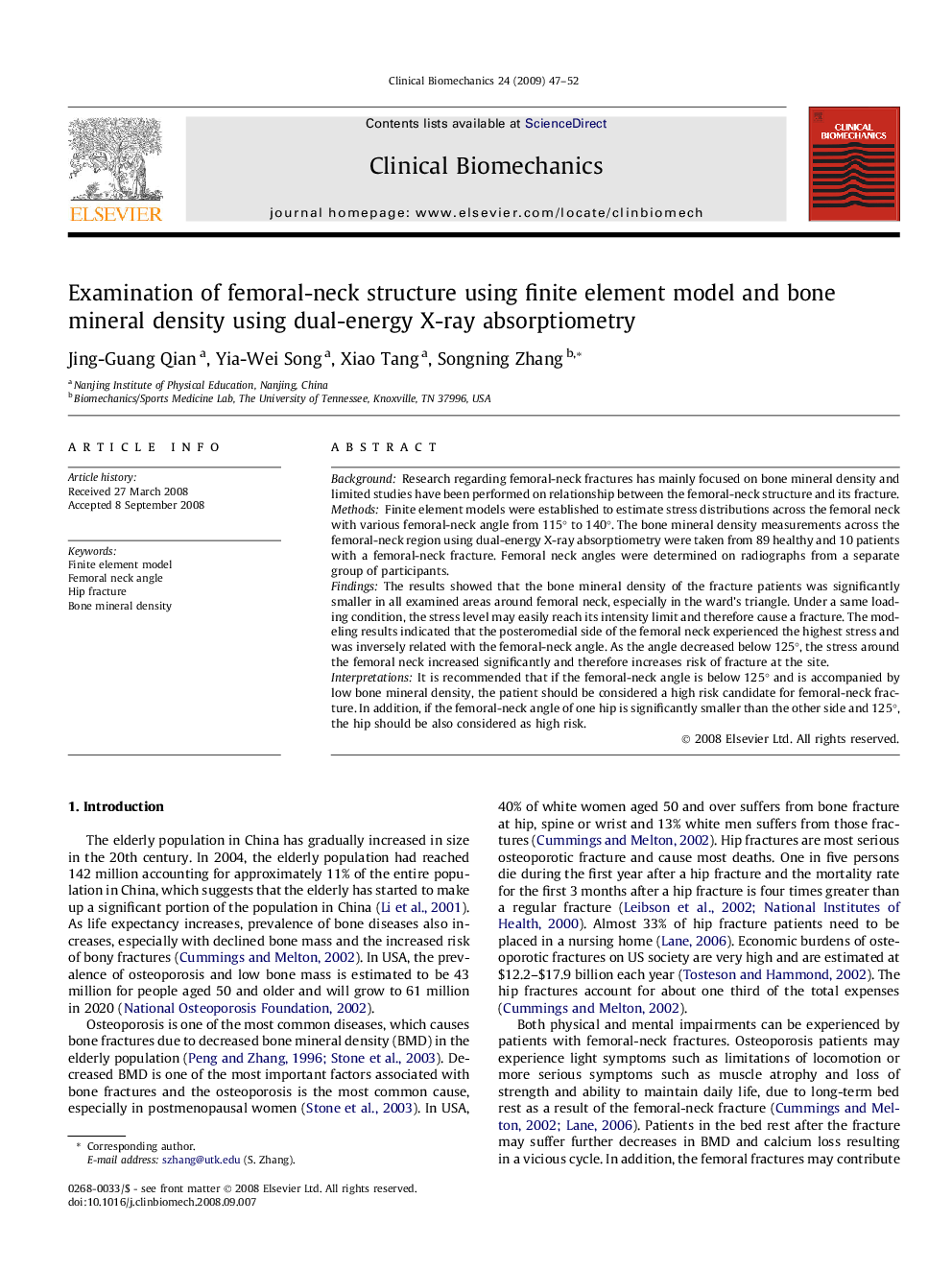| Article ID | Journal | Published Year | Pages | File Type |
|---|---|---|---|---|
| 4050843 | Clinical Biomechanics | 2009 | 6 Pages |
BackgroundResearch regarding femoral-neck fractures has mainly focused on bone mineral density and limited studies have been performed on relationship between the femoral-neck structure and its fracture.MethodsFinite element models were established to estimate stress distributions across the femoral neck with various femoral-neck angle from 115° to 140°. The bone mineral density measurements across the femoral-neck region using dual-energy X-ray absorptiometry were taken from 89 healthy and 10 patients with a femoral-neck fracture. Femoral neck angles were determined on radiographs from a separate group of participants.FindingsThe results showed that the bone mineral density of the fracture patients was significantly smaller in all examined areas around femoral neck, especially in the ward’s triangle. Under a same loading condition, the stress level may easily reach its intensity limit and therefore cause a fracture. The modeling results indicated that the posteromedial side of the femoral neck experienced the highest stress and was inversely related with the femoral-neck angle. As the angle decreased below 125°, the stress around the femoral neck increased significantly and therefore increases risk of fracture at the site.InterpretationsIt is recommended that if the femoral-neck angle is below 125° and is accompanied by low bone mineral density, the patient should be considered a high risk candidate for femoral-neck fracture. In addition, if the femoral-neck angle of one hip is significantly smaller than the other side and 125°, the hip should be also considered as high risk.
